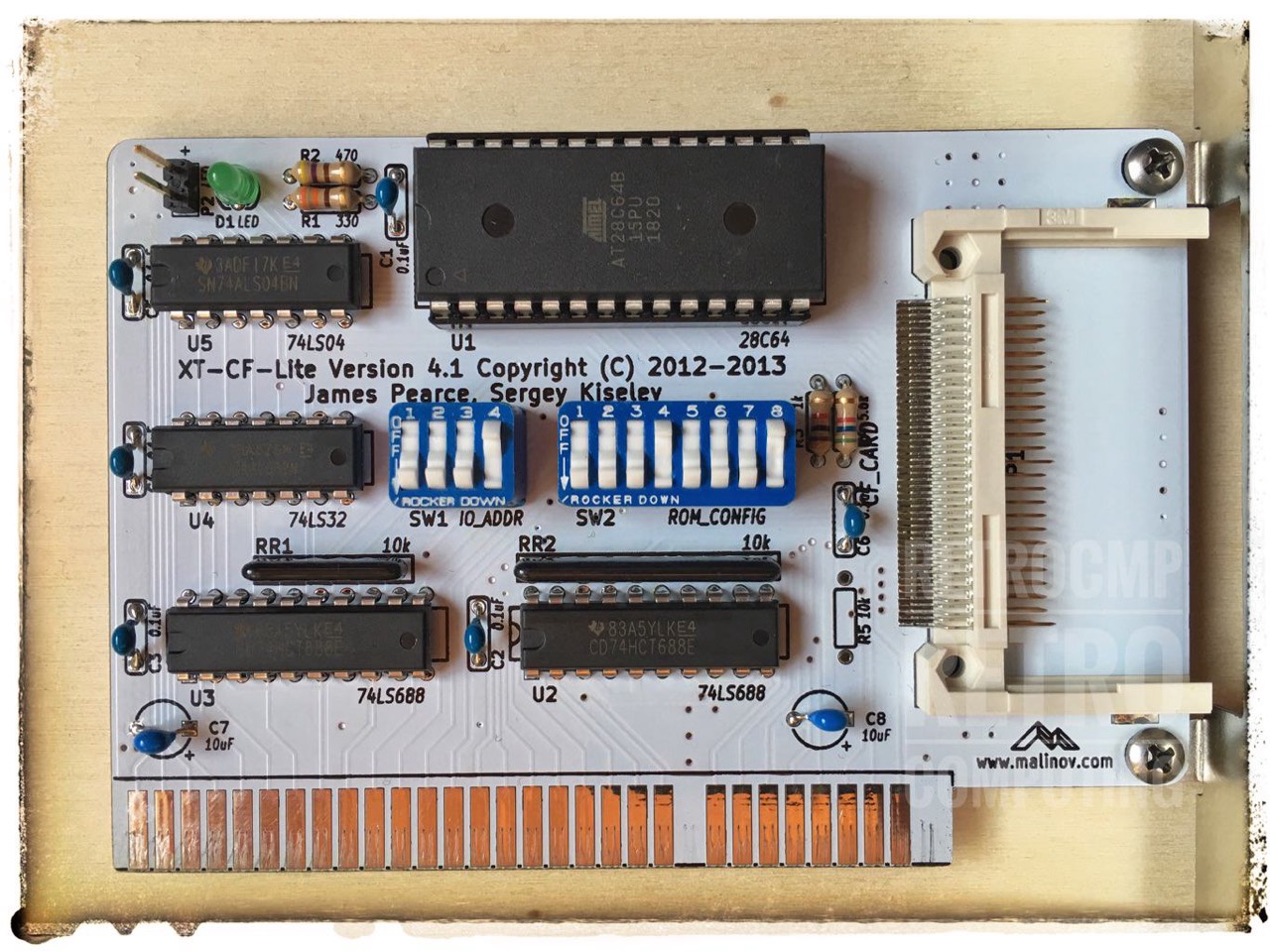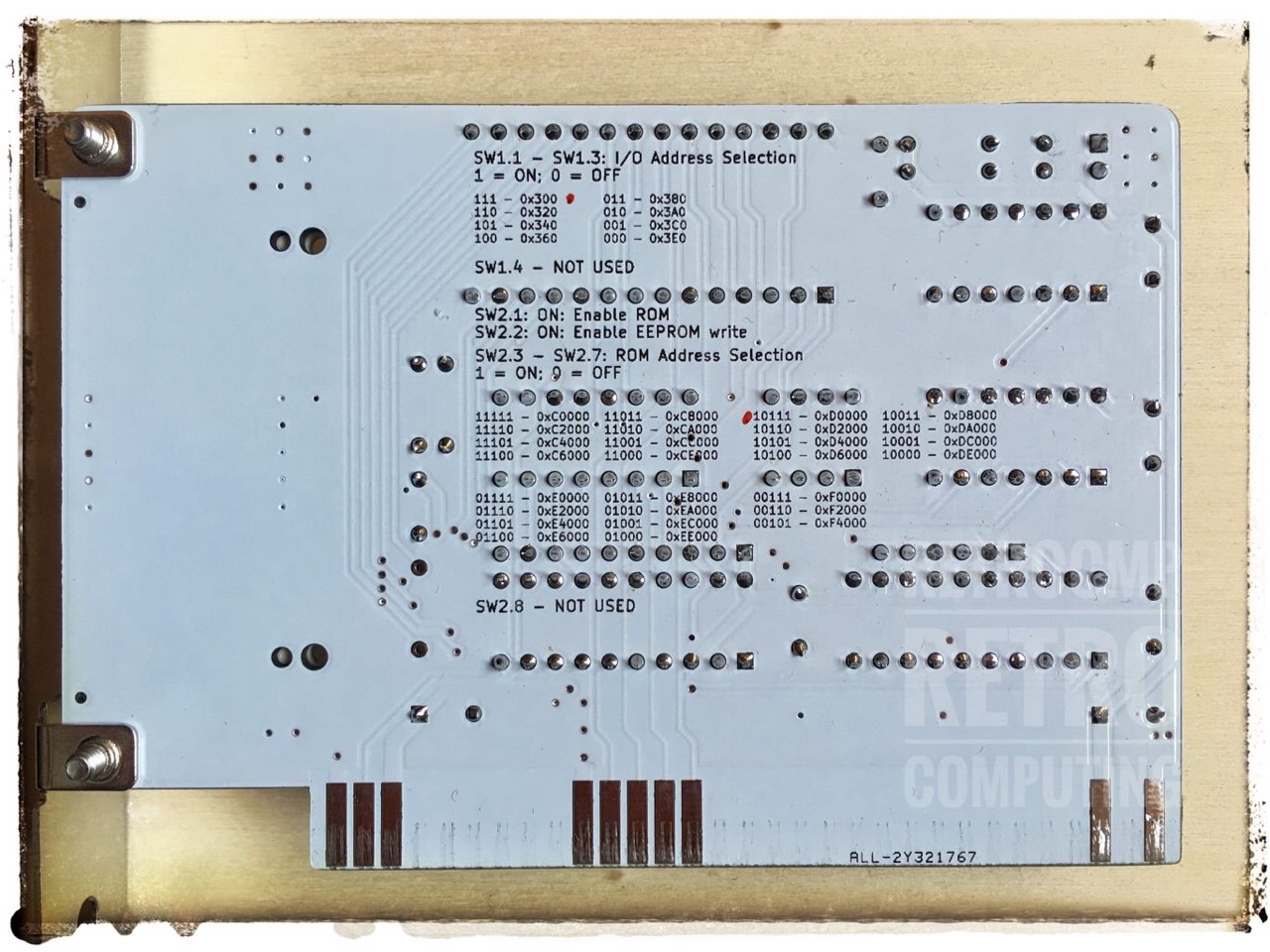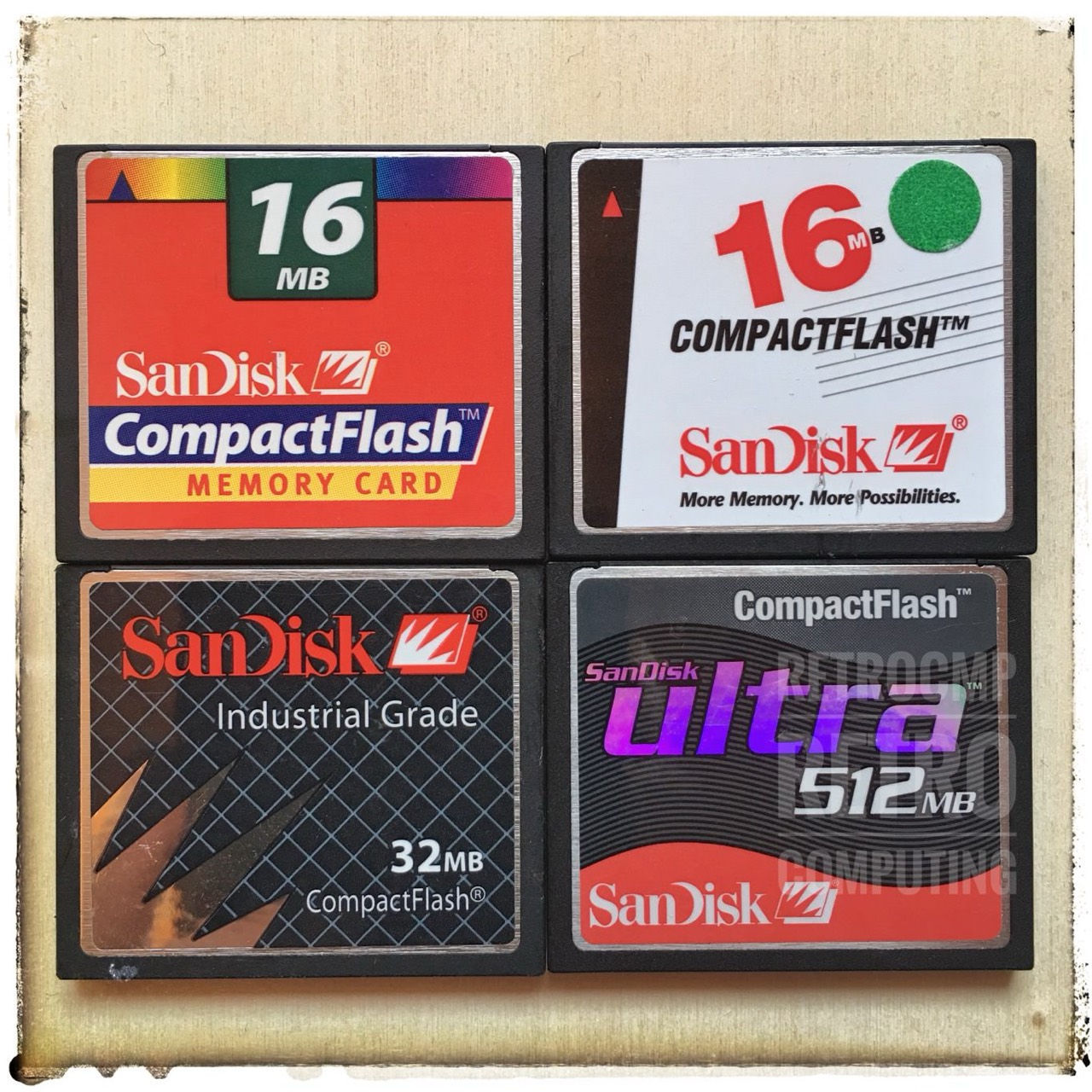It can't be quieter any more!
Basically I love the beautiful old MFM hard disks, but sometimes the volume can really get on your nerves. In this case I like to use the XT-CF-Lite card from Sergey Malinov as a replacement for the hard disk. What a wonderful silence!
My IBM PC configurations:
- IBM PC 5150 (256 KByte)
- HEXA I/O PLUS Card (serial, parallel, RTC, FDC UM8272A)
- Kouvell expansion card KR-513A (384 KByte)
- VERAVIEW 1024 VGA/EGA video card (VGA Mode)
- IBM fixed disk controller (62X0786) + IBM WD25
- ROM BIOS: 0xC8000
- PC-DOS 3.30
- XT-CF-Lite (XTIDE: v2.0.0b3+, 2015-09-15, R591)
- ROM BIOS: 0xD0000
- I/O Port: 0x300
- IBM XT 5160 (see configuration)
- Monochrom Hercules Card
- PC-DOS 3.30
- XT-CF-Lite (XTIDE: v2.0.0b3+, 2019-05-09, R602)
- ROM BIOS: 0xD0000
- I/O Port: 0x300
- Xircom PE3 network adapter
Actually it is only important that you select the ROM BIOS and I/O port address(es) correctly. I am using the default settings 0xD0000 and 0x300. These settings are compatible with both the VGA card (0xC0000) and a standard XT hard disk controller (0xC8000).
Update: 2019-06-28
I made the effort to reflash the XTIDE Universal BIOS (XUB). It works fine and is relatively easy to do. You only need the corresponding file XTIDECFG.COM, which also fits to the existing release and that was it.
Just follow the links below, everything will be explained there.
Update: 2020-12-21 (1)
Very important: I like to use EEPROMS (ATMEL AT28C64B) with the XT-CF-Lite, because it can also flash it. But! After a successful test, be sure to switch SW2.2 (enable writing) to OFF! Why? I don't know the exact reason, but after using it several times, one single byte actually flipped and the XT-CF-Lite „disappeared“. It took me several hours to find the byte that had flipped over. I didn't know what to look for! Perhaps my XT-CF-Lite also has a fault, but basically it works perfectly.
Update: 2020-12-21 (2)
This is also important: Changing the IDE address (default: 300) requires reconfiguring and reflashing with XTIDECFG! Changing the ROM address (default: D0000) requires NO reflashing, just change it. But do not use twice!
CompactFlash (CF) cards
Actually you think you could take any CF card, but that's not the case! On the one hand there are the limits of the operating system and on the other hand not every CF card is bootable!
PC/MS-DOS partition limitations
- DOS 1.x: no harddisk
- DOS 2.x: 16 MByte
- DOS 3.x: 32 MByte
- DOS 4.x: 2 GByte
- DOS 5.x: 2 GByte
- DOS 6.x: 2 GByte
Bootable or not / fixed or removable disk?
I still have some old CF cards from about 1999. Although these are consumer cards, they are still bootable, but ... Since the middle of the 2000s the big companies have put a stop to this and developed so-called industrial cards. These were also much more expensive at that time! Not any more today.
Consumer CF cards can only be used as a removable disk, whereas Industrial CF cards are used as a fixed disk.
Original citation Transend.
So don't be surprised if one or the other CF card is not bootable. All cards can be formatted and described, you will only notice the difference at booting.


SW2-2 is important! Set it to OFF after your are done with testing/flashing.

How to prepare the CF card
The easiest way is to create a bootable CF card under DOS 5.0-6.22.
- Create a suitable Partition with FDISK and make it ACTIVE
- Initialize with FORMAT /S
- FDISK /MBR
Step 3 is very important. Every "bootable" CF card should now be bootable, if not use another card. If you don't use DOS 5.0-6.22, see also the last link to WipeDisk!
Links
- Sergey Kiselev projects: XT-CF-Lite V4
- XTIDE Universal BIOS: xtideuniversalbios.org
- XTIDE Universal BIOS: Pre-Built Binaries Download Centre (Hosted by Lo-tech.co.uk)
- XTIDE Universal BIOS: Google Code Archive - BIOS Downloads
- XTIDE Universal BIOS forum at: Vintage Computer Forums
- www.lo-tech.co.uk: WipeDisk is a simple utility to erase the partition table from a fixed disk.